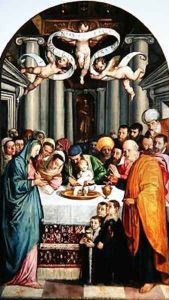Giambattista del Moro Paintings
Giambattista del Moro, also known as Giovanni Battista del Moro, was an Italian painter of the Renaissance period. He was born in Verona in 1516 into a family of artists; his father was the painter Francesco Moro. Not much is known about his early life or his artistic training, but it is believed that he may have been a pupil of Antonio Badile, an accomplished Veronese painter of the time, and was likely influenced by the works of other prominent artists such as Paolo Veronese and Jacopo Tintoretto.
Del Moro’s work was predominantly centered around religious subjects, but he also produced portraits and historical paintings. His style combined elements of Mannerism with the more classical approaches of the High Renaissance. His compositions often featured elongated figures and a masterful use of color that was typical of the Venetian school. He was particularly known for his skill in depicting light and for his delicate brushwork.
Throughout his career, del Moro worked on various important commissions. Notable among these was his work at the church of San Bernardino in Verona, where he painted a series of frescoes. He also worked in the Cathedral of Verona and in other religious institutions, contributing to the rich artistic heritage of the city. Despite his considerable output, Giambattista del Moro did not achieve the same level of fame as some of his contemporaries.
Giambattista del Moro died in 1575 in Verona. Although he was a respected artist in his time, his works have not been as widely studied or celebrated as those of the leading figures of the Italian Renaissance. However, his paintings can still be seen in various churches and museums, where they continue to be appreciated for their beauty and craftsmanship.
